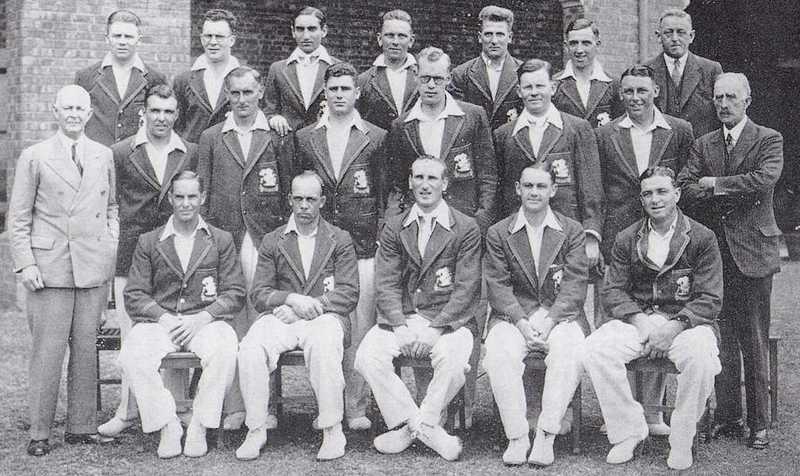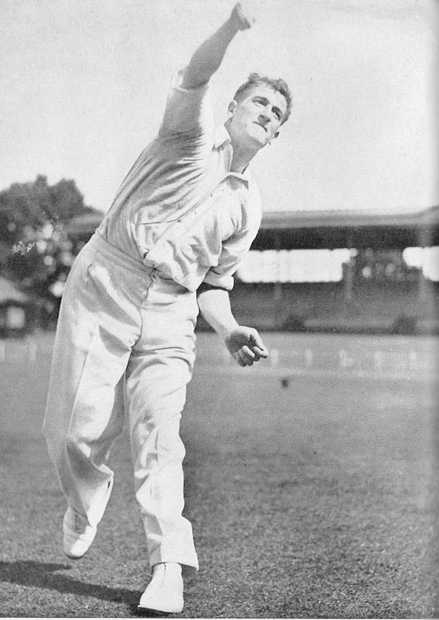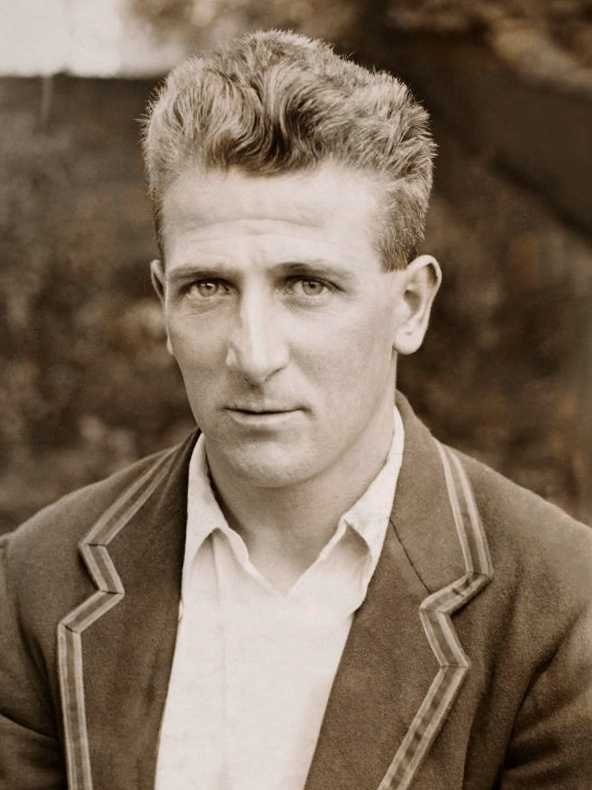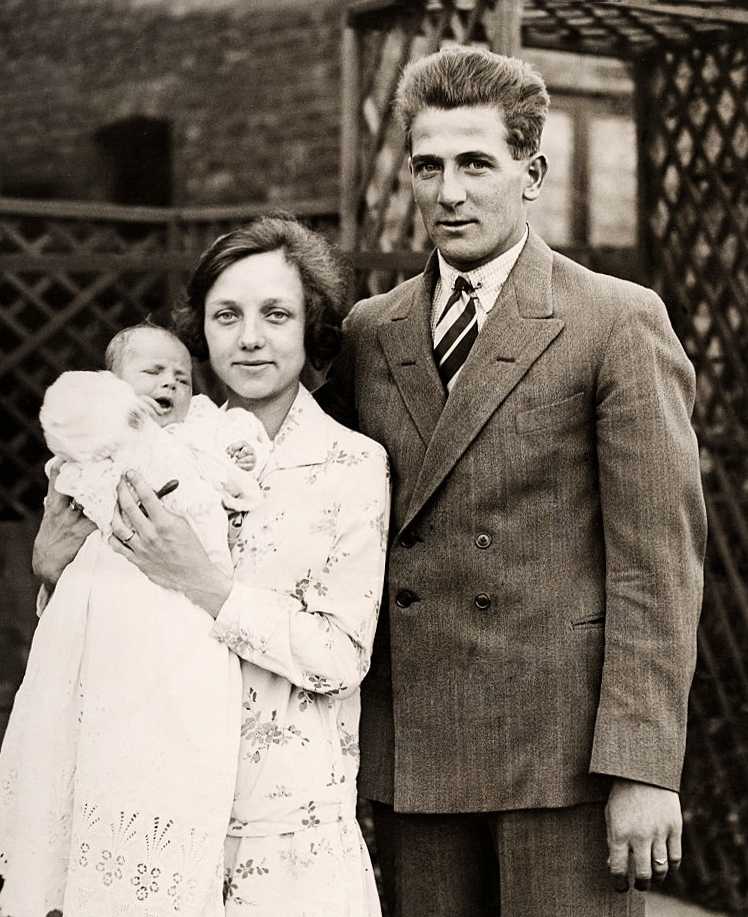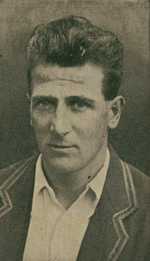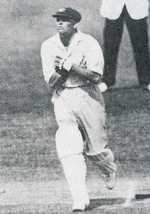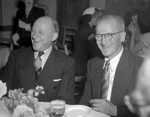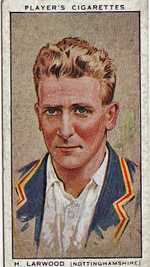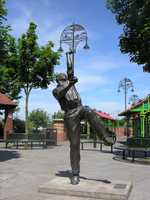1. Larwoods's early life
Harold Larwood was born in 1904 in the village of Nuncarngate in Nottinghamshire. He was one of five sons born to Robert Larwood, a miner, and Mary Larwood.
Larwood was not the only pupil to attend the local village school over the years who would go on to play test cricket, among them Bill Voce who would spearhead the ‘Bodyline’ attack alongside Larwood. Leaving school in 1917 Larwood initially worked in a miner’s cooperative store before going on to work at Annesley Colliery.
His father's influence
Robert Larwood had a passion for cricket which rubbed off on his son and by 1918 Harold was playing for the village’s second eleven while still only 14 years of age.
However his talent was already starting to show as he took 76 wickets in his first season playing in men’s cricket and by 1920 he had been promoted up to the first eleven, a side in which his father also played.
A reminder of the hard times many families lived in during this period was illustrated by the younger Larwood having to play at this new level in plimsolls as the family could not afford to buy him new cricket boots.
2. In his early career
They say talent always rises to the top and Larwood’s genuine talent as a fast bowler was soon clear for all to see at his new club.
After initially turning out for the second eleven Larwood made his county debut in 1924, marking the occasion with the wicket of the experienced test player Vallance Jupp. It was a taste of things to come, but Larwood had to remain patient for a time, his next game for the first eleven not until the following year against Yorkshire. Yet it was in the 1926 season when his career really started to hit the heights.
From the county to the international stage
Larwood’s form at county level in 1926 was rewarded with a call-up to the England squad for the forthcoming Ashes series against the Australians, no doubt helped by twice taking the wicket of one of the country’s leading batsmen, Jack Hobbs.
Although he took 5 wickets in a warm-up fixture Larwood missed out on selection for the first test. However he did not have to wait too long to make his international debut after being selected for the second test and although missing out on the third and fourth matches of the series, he played a significant role in the fifth and deciding test which saw England retain the Ashes.
Larwood was to return with over 100 first class wickets in a season 8 times with 1926 being the first of those occasions. In 1928 Larwood would for the first time tour the country to where he would ultimately emigrate. Accounts from the period say Larwood bowled at a ferocious pace, taking 18 wickets in a series England won 4-1, though the heat and conditions in Australia seemed to take a toll on the fast bowler's effectiveness toward the end of the tour. In the first test match of the series Larwood took 6 wickets for just 32 runs in the first innings in a game subsequently dubbed ‘Larwood’s match’.
First hardships
Larwood had established himself as a county and international cricketer of some repute. He distinguished himself for his country in further test series against South Africa and West Indies before the Australians returned to England in 1930. It was a frustrating series for Larwood who suffered illness and missed the second test, before being dropped for the fourth match. The series was the first meeting between legendary Australian batsman Donald Bradman and Larwood and unfortunately for the Englishman Bradman won this initial duel convincingly. The scene had been set for ‘Bodyline’.
3. 'Bodyline'
‘Bodyline’ was the term used to describe fast leg theory bowling.
In fact it was nothing new and was simply bowling a line concentrating on the batsman’s leg stump with a predominantly leg side field. Larwood and other bowlers had bowled in this manner in prior test series, though in short bursts. However in the series in Australia in 1932-33 the competitive English captain Jardine took it to a new level of intensity.
Douglas Jardine's plan
Donald Bradman was viewed as having a weakness to the short delivery in to his body. With his pace and reliable accuracy Larwood was the man for Jardine’s plan. Yet in an era where players had little protection for their body and head the mounting hits being taken by the Australian batsmen from the onslaught of short pitched deliveries aimed toward the body was causing rising anger, with much of it aimed at Larwood.
This all but boiled over when a Larwood delivery struck the Australian captain Bill Woodfull just above the heart and the following day batsman Bill Oldfield was hit in the temple, fracturing his skull. Oldfield staggering away from the crease before falling to his knees is one of the most striking images of the series. In a wonderful piece of understatement reminiscent of the time the Australians complained to their MCC counterparts of the ‘unsportsmanlike’ tactics of the English team.
Larwood's peak time and escape
Amid all the controversy England did what they went to Australia to do by winning the series 4-1. Larwood played in all five tests and was the leading wicket taker in the series with 33 wickets at an average of 19.51. He was 29 years old during this tour and probably at his peak, but it was to take its toll as he was made a scapegoat for much of the controversy and discomfort surrounding the tactics employed. On his return to England after the series Larwood refused to issue an apology, stating he was only following his captain’s orders. He would never play for England again.
4. In his later Years and Legacy
Although Larwood was never called up to play for his country again he saw out his first class career with Nottinghamshire until his retirement in 1938.
He consistently took wickets for his county including an impressive haul of 119 in the 1936 season. Up until the outbreak of the second world war Larwood coached cricket in Blackpool, before working as a market gardener. After the war Larwood bought a sweet shop which he ran until his emigration to Australia with his family in 1950.
Larwood's legacy
Larwood was belatedly recognised by the MCC two years before he emigrated when given an honorary membership to the club, an award which perhaps went a little by the way of redemption for their treatment of him on his return from the ‘Bodyline’ series. The award of an MBE in 1993 was further recognition at last for one of England’s finest ever bowlers, though it is possible the naming of a stand at Nottinghamshire’s Trent Bridge ground after him and fellow fast bowler Bill Voce may have given him equal satisfaction.
His scorings
Harold Larwood’s test career was not a lengthy one by today’s comparisons, playing just the 21 games at that level. He took 78 wickets at an average of 28.53 runs. Across his 14 year first class career Larwood amassed 1427 wickets at the cost of just 17.51 runs a wicket, a more than impressive average for a fast bowler. He was also an accomplished batsman scoring over 7,000 runs, including 3 centuries.
Interesting fact...
The name of Larwood will always conjure up images of the ‘Bodyline’ series but his career should not be defined by one series alone. A modest and humble man, grounded by his working class mining background, his name remains a by-word for quality fast bowling. At around 5 feet 8 inches he was not a tall man, but in terms of cricket his stature was immense.
